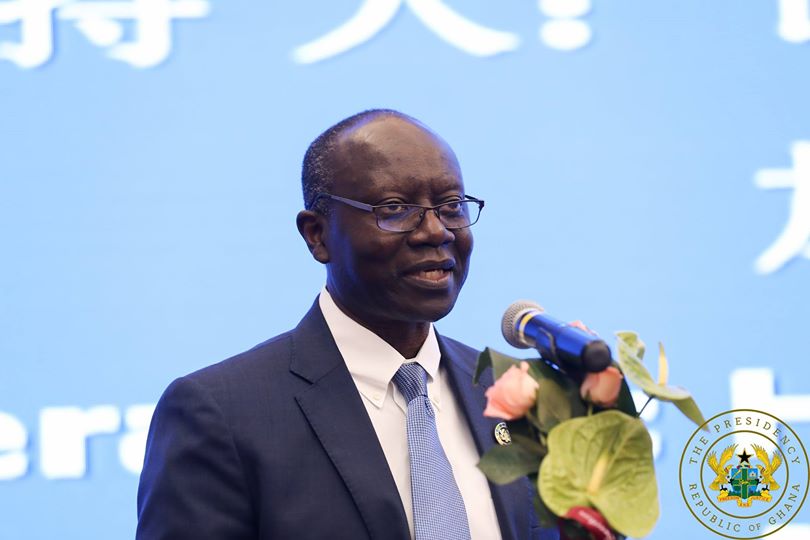About the town of Atonkor, Buem
Atonkor-Buem is one of the thirty-seven towns that make up the Buem enclave or the Jasikan District, in the Oti Region of Ghana, West Africa. It has a population of about 3000 and is located about two miles from Jasikan, the administrative, commercial, and economic hub. The district is approximately 155 miles or 250 km from the Ghanaian capital Accra. Geographical location is 7°25’0″ N, 0°25’0″ E. Natives are primarily of the Buem tribe and speak the Leleme language. Most natives of Atonkor consider themselves Christians. It is fair to say that all major Christian denominations have a branch in the town. Atonkor is a friendly and welcoming community. Later arrivals like the Muslims and Ewes have coexisted peacefully with the natives. For decades they are free to practice their faith and customs without interference.
The current chief is Nana Asiedu Adjedu IV, and the queen is Nana Oforiwa Mabel Coduawaa. Other community leaders include the Chief Imam Alidu Adas of Zongo, the predominantly Muslim community section of town. Togbe Kwao Roti, the chief of the Ewe residents.
The town consists of four significant clans: the Bewisabi, the Badomija, the Kotoko, and the Badomi(Akura Liku). Farming and animal husbandry is the primary occupation for most of the residents. Major crops cultivated are cocoa, corn, oranges, cassava, palm, and vegetables. The scale of agricultural activity is mostly at subsistence level farming.

The brief history of the town
As is the case for most Buems, historians think that natives of Atonkor descended from the Guans. The Guans are part of the Mosie Empire, which existed in the area of present-day Burkina Faso. Their empire lasted from the 11th century to around 1896. However, oral history handed down over the years suggests that some of the settlers of Atonkor included migrants from the broader region of Sudan. An area that stretched across west and central Africa. Their first significant settlement on the journey down was along the Senchi river. They then moved to Anyeniwasi to spend some time before moving towards Abotia as they pushed through the Volta ridges and valleys to Avetime.
After months of travel, they arrived in Kologbagi near present-day Bodada. The early Buem settlers warmly received them. The chief and his people offered them land to settle and cultivate. Years later, most of the original company led by Nana Adjedu left Bodada to search for more land. After considering the mountainside called Agbegbe, they abandoned that site due to the lack of a good source of water. They moved further down the valley to a place named Okubeh Kalor (meaning below the palm tree). Finally, they settle down at their present location near the Kunsu river.
They kept their allegiance to the Bueman Royal Stool and maintained their bond with the Buems left behind in Bodada. The bond enables them to play a vital role in defending the Buem enclave against tribal various attacks. The Ashanti kingdom’s expansion efforts incursion attempted to overrun the area. The enclave became a burial field for many of the Ashanti warriors involved in the invasion. Many relics of Ashanti invaders, including that of the commanding general, remain in Ationkor. Some are part of the spoils of war artifacts used to decorate the Atonkor royal stool. Atonkor natives displayed many acts of bravery during these wars. They fought gallantly in the Frekusu war and are first to engage the enemy. This act of courage earned them the name Batonkuni meaning the leaders. Batonkuni eventually became Atonkor over the years.
Festivals and celebrations in Atonkor
Kokoma, Legongo, and Akofodi are cultural dances performed in Atonkor for entertainment and cultural celebrations. The Akonfodi dance takes place on special occasions such as the yam festival celebrations. The other time for the dance is during the funeral of a deceased chief or prominent elder. Atipani, and the Frontofrom are unique drums use in Akonfodi performance. Warriors and big game hunters showed off their fighting and hunting skills in the dance.
Cultural dance in Atonkor
The yam festival is a big celebration that lasts for a week. The natives use this time to give thanks for the bountiful harvest at the beginning of the yam harvest. Before the festival, natives could not eat yam in the town. Over the years, the celebration developed into a community reunion. Natives living out of town came home and visit. It also offers a forum to discuss development and community projects. The agenda topics include community issues such as school constructions, safe water supply, and health care facilities development. Some natives and elders believed the yam and other festival celebrations in the town had become casualties of Christianity in recent years. Reverend N.T. Clark has introduced Christianity to the town several years back.
Unfortunately, over the years, the yam festival celebration frequency has gone from an annual event to an occasional celebration. The chief and elders believe this has resulted from the misconception of the meaning behind the celebrations. The rapidly growing Christian population equates the festival and cultural celebration to paganism, ancestral, or idol worship. It will probably make sense to include local church leaders in the planning and ceremonies’ programs to dispel this notion. Such action could encourage greater community participation from all.
Amenities nearby
The closest hospitals are the Worawora Regional at 16 km away and the Jasikan district hospital at two km away. The nearest police station is Jasikan District Police Quarters, about two miles away. Female education is currently encouraged as much as male education. School in town include the Presbyterian Women Model School set up to teach trades and boost female education. Atonkor boasts of many highly educated native sons and daughters operating in the echelon of the Ghanaian society. Prominent natives include Isaka Briama, Deputy Director of the Ghana Audit Service, and Mrs. Asare Opokuwa, a retired educator and professor.
Project GhanaQuest consists of amateur anthropologists and historians on a mission to explore the unique history and culture behind the numerous towns and villages and people who live in them across Ghana. For a platform to share the story of your town, people and culture emails us at info@ghanaquest.com






















This is a wonderful work done. Communities use their festivals as a source of generating money for developmental projects. What con we do to make the Yam Festival attractive for people to patronize.
So laudable and educative write ups. I will like to read about Teteman Buem another historic town on that hill.